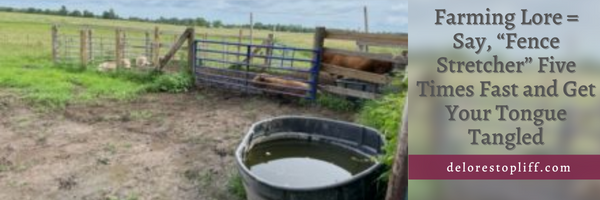
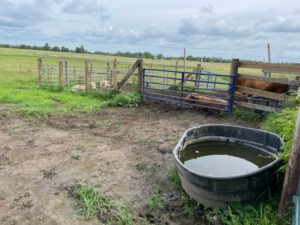 Fences are important. Thanks to rambunctious yearling bulls, our fences were holey—not holy. When fences fail, they must be repaired or animals escape and farmers suffer. Last summer my exercise program involved chasing and persuading headstrong escaped yearlings that my lush raised gardens beds were not salad bars for their delight. They found my beds
Fences are important. Thanks to rambunctious yearling bulls, our fences were holey—not holy. When fences fail, they must be repaired or animals escape and farmers suffer. Last summer my exercise program involved chasing and persuading headstrong escaped yearlings that my lush raised gardens beds were not salad bars for their delight. They found my beds the perfect height for grazing. It looked like efficient mowers had passed through. Except for the tomatoes—they refused those.
the perfect height for grazing. It looked like efficient mowers had passed through. Except for the tomatoes—they refused those.
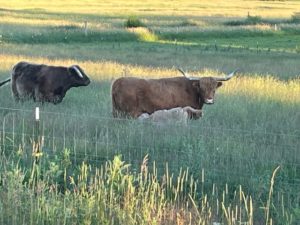
I phoned a neighbor to ask if they owned a fence stretcher. The wife didn’t know so asked her husband. Try saying fence stretcher five times fast. Both of our tongues got so tangled it didn’t sound like we were speaking English or any known language.
It took time but an Amish neighbor built what we hope is an escape-proof continuous fence shown in this picture of a cow and new calf. Here’s also a picture of visitors admiring his wagon and beautiful team of horses.
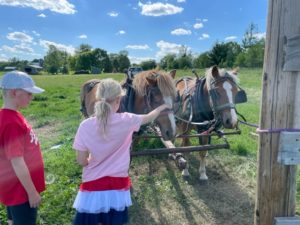
This one shows me pitching hay was last summer when unprecedented drought meant we had to supplement. This year’s grass is abundant. I find it’s possible to do farm chores and still write books in my head or problem-solve the online university courses I teach. Good times! 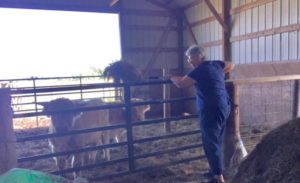
One day I was photographing tornadic wind damage to our metal barn. When I finished and walked toward my garden beds, an adolescent skunk emerged from under our nearby shed and stretched. They’re nocturnal. He must have just awakened. We stood four feet apart. We both froze in place. I didn’t raise my camera. He didn’t raise his tale or turn around. I slowly backed away. He did the same. I still cautiously check that area when walking that way. It’s hard to explain how cute, small furry creatures can create so much fear, but they do.
As a kid visiting the Pacific Ocean, our Dad bought milk from The Seagull Dairy. He said their milk came from seagulls. I’m glad that’s not true. Can you imagine how hard milking would be?
Driving through eastern Oregon, our Grandpa pointed to cows grazing on mountain slopes. “God gives them short uphill legs to stay upright,” he said, “but they have to walk in circles all the way down or they fall.” It made sense at the time.
At 1.3% of North America’s population, some say farmers are a dying breed. If so, they die happy, partnering with sun and rain and wind to feed people and stay connected to the living breathing parts of our planet. The truth is we need them and the wholesome no-nonsense life values they fulfill.
When’s the last time you visited a farm? What did you observe, plant, or harvest? Wouldn’t you like to return to one soon?


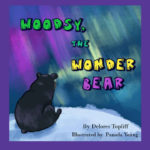

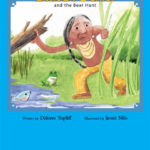
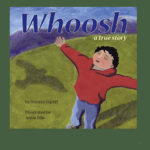
I’ve spent the last two days at what used to be the largest independently-owned dairy in Mississippi. Now they grow soybeans and corn and the fields were beautiful. I hope we don’t lose all of our farmers!